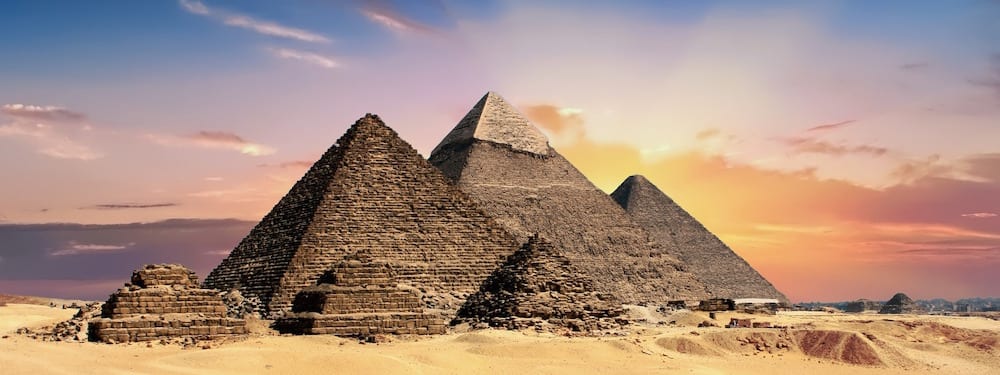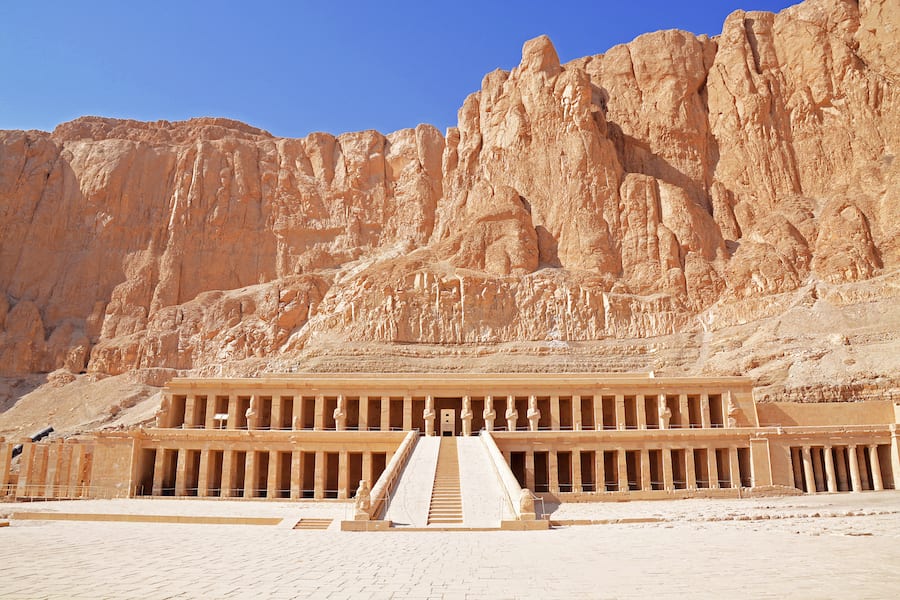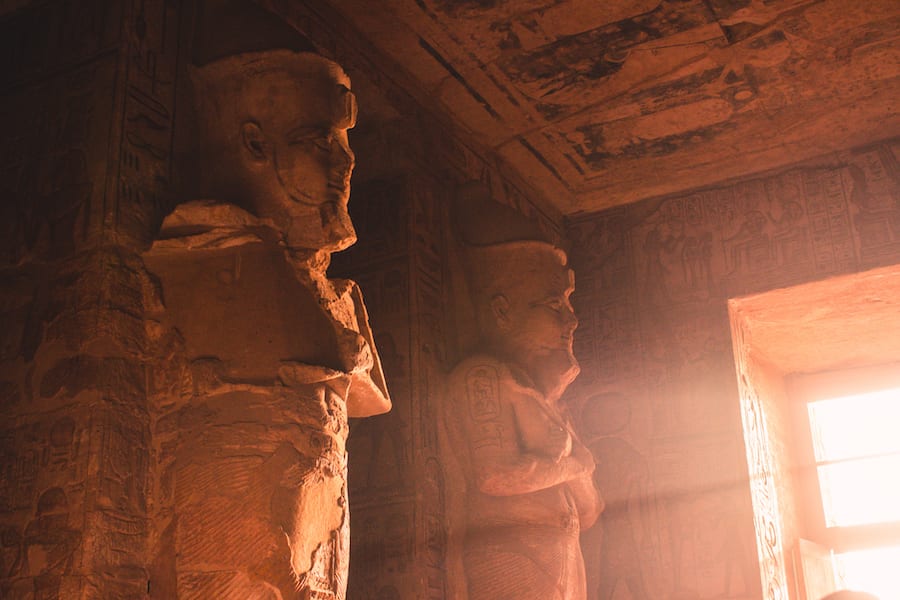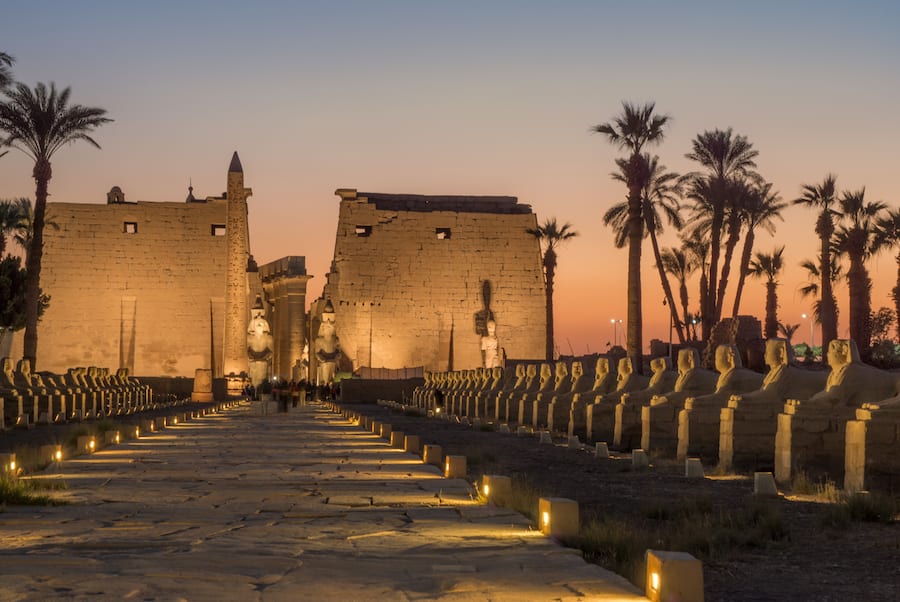Share this!
Iconic Sites and Landmarks of Egypt
The most iconic landmarks in the world can be found in Egypt. The country holds one of the Seven Wonders of the Ancient World as well as other monuments that add to the mystic of the country. The world’s longest river, the Nile River, runs through Egypt, where many of the early civilizations were established which later evolved into the major cities we see today. Egypt has maintained its position as a top travel destination around the world for tourists interested in discovering the country’s ancient marvels.
Pyramids of Giza
The most iconic landmarks in Egypt are the Pyramids of Giza. The pyramids are considered among the Seven Wonders of the Ancient World and perhaps the most famous landmarks in the entire world. Close to 15 million people visit the monuments every year.

One of the biggest awe about the Pyramids of Giza is the debate over their construction. They were erected more than 4,500 years ago. The complexity of the structures makes them Egypt’s biggest mystery over how the feat was achieved.
The Pyramids of Giza are located in the Giza Plateau, an area consisting of the pyramids, the Great Sphinx, and other monuments and temples. The plateau is open to the public to explore, including the ability to enter the pyramids. Inside the pyramids, visitors can see ancient wall inscriptions, tomb art, and artifacts which were symbolically stored in the pyramids for the Egyptian pharaohs who are buried in them.
Valley of the Kings
Egypt was home to many famous Pharaohs throughout history. Many of these pharaohs were discovered in tombs located in a common region, now known as the Valley of the Kings. The Valley of the Kings is located nearby Luxor, along the Nile River. The name is derived from the valley being a burial space.

The valley is open to the public to explore, where several notable tombs can be recognized, the most famous being the tombs of King Tut and Rameses VI. Although the Tomb of Tutankhamun is a visitor favorite, it’s less decorated than many of the others since many of the relics have been removed and placed in the Egyptian Museum in Cairo.
Entering the tombs and you will get a glimpse of the vast wealth of Ancient Egypt. You can see many artifacts which were discovered as well as restored tomb art which depicts scenes and mythology from the ancient times. Keep in mind that photography is strictly prohibited in the tombs.
Nile River
To understand Egypt, you have to understand the importance of the Nile River. The Nile River is a natural landmark of Egypt, being a significant reason for the establishment of civilization in the country. The Nile flows more than 6,650 kilometers, making it the longest in the world, surpassing the Amazon River by 250 kilometers. The river is unique since it flows north. It passes through eleven countries in Africa, ending up at the Mediterranean Sea.

Many of the major Egyptian cities are located along the Nile, including Luxor, Cairo, and Alexandria at the mouth. The river was used for sustaining life, irrigation, and trading crops such as wheat, flax, and papyrus. It helped Egyptians establish trade relations with other countries located along the Nile.
The Nile River is a major tourist attraction, allowing visitors the opportunity to ride along the waterway. Cruises can be booked, which take you to the major cities. Other local rides on the river are conducted on dhow boats and felucca boats to give an authentic Egyptian experience.
Abu Simbel Temples
The Abu Simbel Temples are considered among the most beautiful temples and Egypt, making them an iconic landmark to visit. The monument consists of two temples, the Great Temple of Ramesses II and the Small Temple of Nefertari, a royal couple, with it being the second temple in Egypt history dedicated to a queen. They are located in the southernmost region of Egypt, along the Nile on the Egypt-Sudan border.

The temples were carved into a mountainside in the 13th Century but lost in time due to being buried in sand. The temples were later rediscovered in 1813 and ultimately relocated in the 1900s during a project to protect them from flooding.
The UNESCO World Heritage Site features huge rock reliefs, honoring the Battle of Kadesh. Large statues line the entrance and interior of the temples. Visitors are allowed to enter the temples where hieroglyphics decorate the walls, showcasing life during their lifetime. The temple grounds periodically hosts festivals and light and sound shows for visitors.
Temple of Luxor
Unlike other Egyptian temples that are dedicated to pharaohs or gods, the Temple of Luxor served a different purpose. It was built for rituals performed during the Festival of Opet, a significant event in Ancient Egypt. It was also dedicated to the rejuvenation of kingship. There are rumors that future kings would come here to be crowned.

The Temple of Luxor was built around 1400BC thanks to the help of several Egyptian royalties, starting with Amenhotep III, then finished and added on by King Tut and Horemheb. The temple also was once controlled by the Romans during their reign, evident by Roman paintings found in the temple.
The temple is one of the most iconic landmarks in Luxor, having the city built around it. Guided tours are available for visitors to walk through the temple grounds and learn more about the history of the landmark.
Egypt is known for its ancient history, and discoveries are always happening around the country. Visitors are attracted to the Egyptian history. The iconic landmarks are a great representation of the wealth and grandeur ideals that were established in Egypt that have stood the test of time to survive today.




